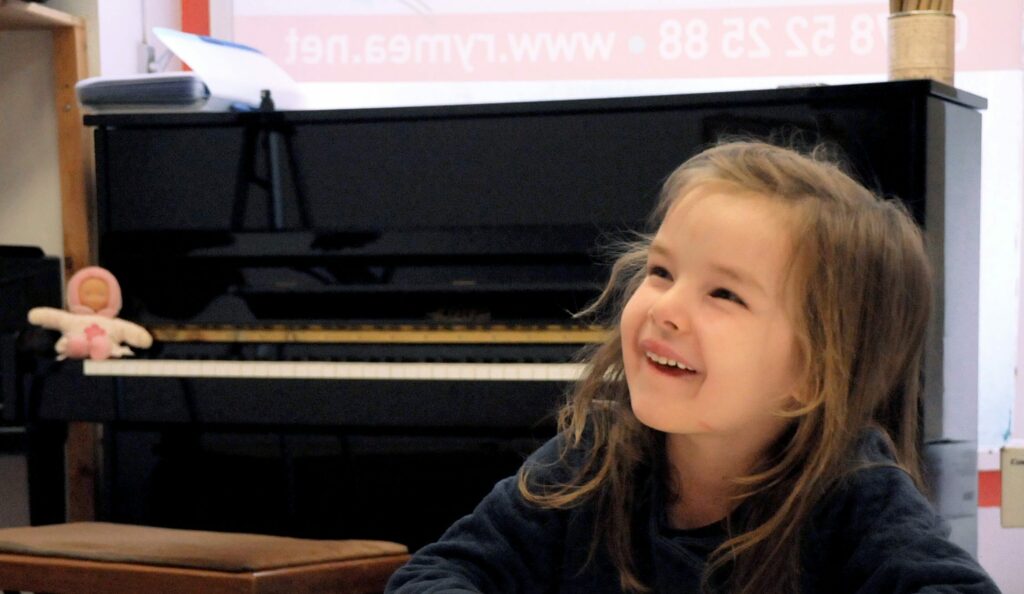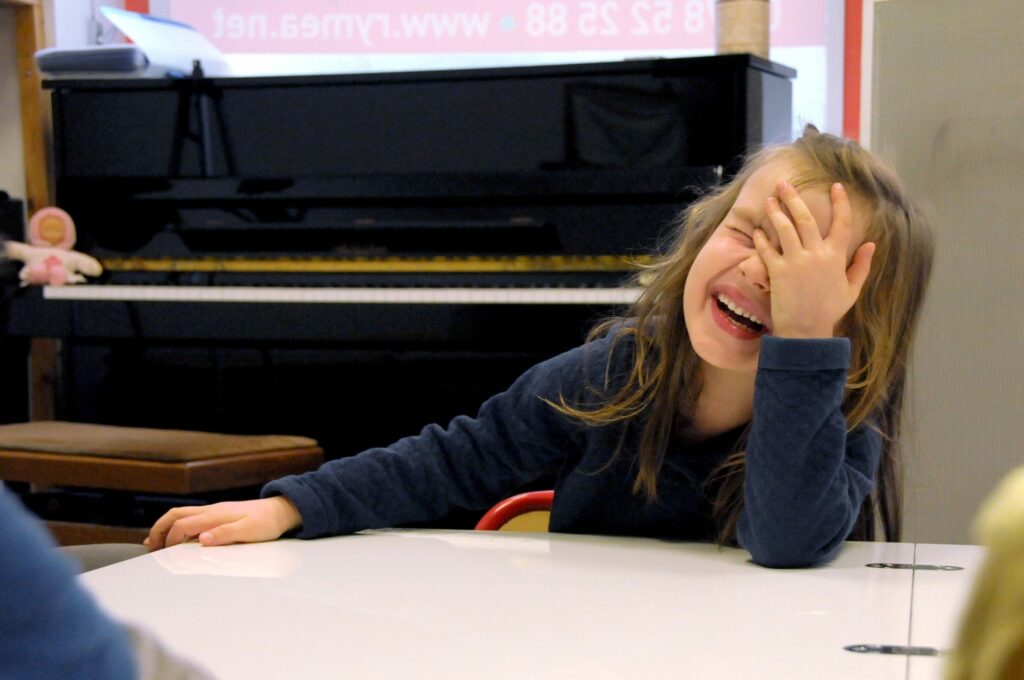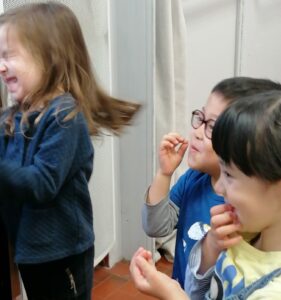Humour in question
This is my personal account of humour as an educational tool.
It has no philosophical pretensions.
It reflects one of the questions I’ve asked myself throughout my career: am I being too much of a clown in my lessons?
My sense of humour has often been highlighted as a quality of my teaching practice, both with children and with adults.
It is, of course, a trait of my character, and also one that is common to my family: siblings, children, nephews and nieces…
Joy has always been the driving force behind my teaching. It’s linked to the commitment of the people involved and expresses their pleasure at taking part in the course. Willems also saw it as a central element in motivating pupils and teachers.
But joy is not always linked to comedy, fortunately!
It can also come from the satisfaction of a successful action, of a job well done, and even more so when a difficulty has been overcome, i.e. when we have gone a little beyond ourselves by ‘surpassing’ ourselves, and therefore growing.
This kind of joy is deeper and more lasting, and takes a little time to blossom.
Comedy is light-hearted if it’s well done, and often triggers laughter or at least a smile, generally creating a complicity with its author and a form of adhesion to the subject or situation (which is why it can be unhealthy).
It is therefore tempting for teachers to use comedy and laughter to win the confidence of their pupils and facilitate less joyful learning. It’s a way of getting them to swallow a bad potion, so to speak.
The risk for the teacher is to play the clown more and more often (especially when it works) and to shield the pleasure and joy that come from surpassing oneself, as mentioned above.
Laughter has always been a source of fuel for me, especially children’s laughter, which is simple and direct, and shows incredible abandon (which makes it all the more important not to abuse it).
When I wasn’t feeling well, or in poor health, I often made the children laugh to recharge my batteries.


But I’ve always kept three things in mind:
- Let the source of comedy be musical;
- Whether it’s for a short period ;
- It should never be associated with mockery (let alone sarcasm).
This last point isn’t always easy, because I’m very sensitive to situational comedy and I may have given the impression that I was being mocking, which I’m not.
Often someone does something that makes you laugh, but you don’t laugh at the person who did it.
If it’s not clear to the person, it needs to be explained, and a simple way of doing this is to reproduce the situation yourself, which can be likened to the comedy of repetition. And if there is any doubt, it’s best to refrain to avoid any misunderstanding.
Finally, I’ve avoided repeating the same gags. Firstly because I hate repeating myself, and secondly to avoid putting on clown acts (that’s not my job!). But children love it when you repeat a gag that makes them laugh!
I’ve got a few tricks up my sleeve that I still pull out occasionally, especially when a child comes crying (or even screaming) to the lesson, clinging to his mother’s arms… That’s when it’s invaluable to know how to divert their attention!
One of the qualities required of a teacher is a keen sense of observation.
This sense develops with time and practice. Observation leads you to see more things and more potentially funny situations. In a way, I think that my sensitivity and humour have developed thanks to Willems. Because the practice of his teaching approach, anchored in the present and the facts, is based on sensory receptiveness devoid of any a priori judgement. That’s what makes it so universal, just like the joy of living!


